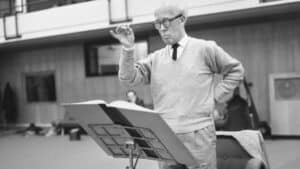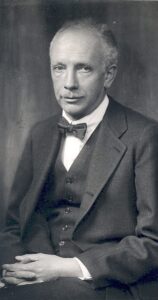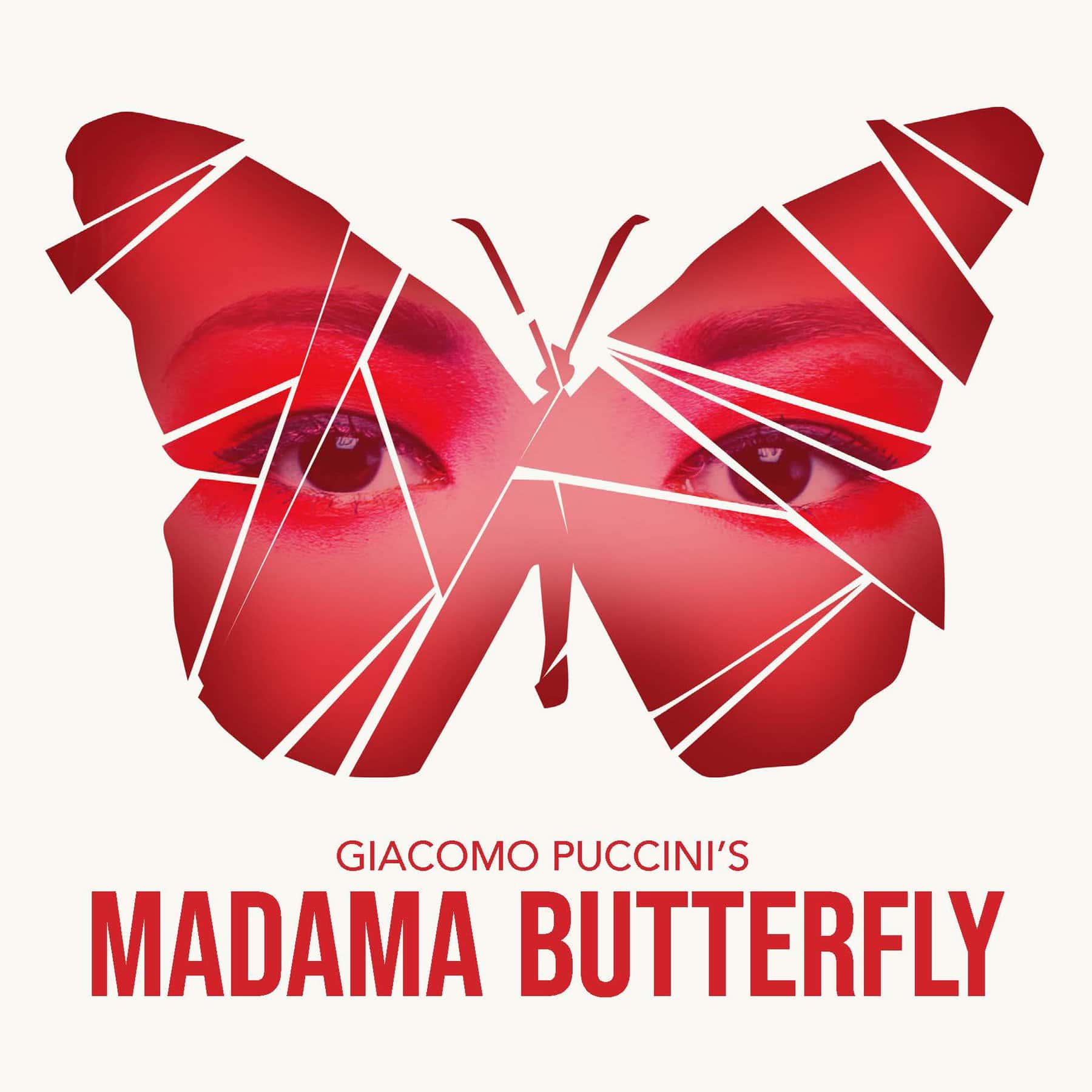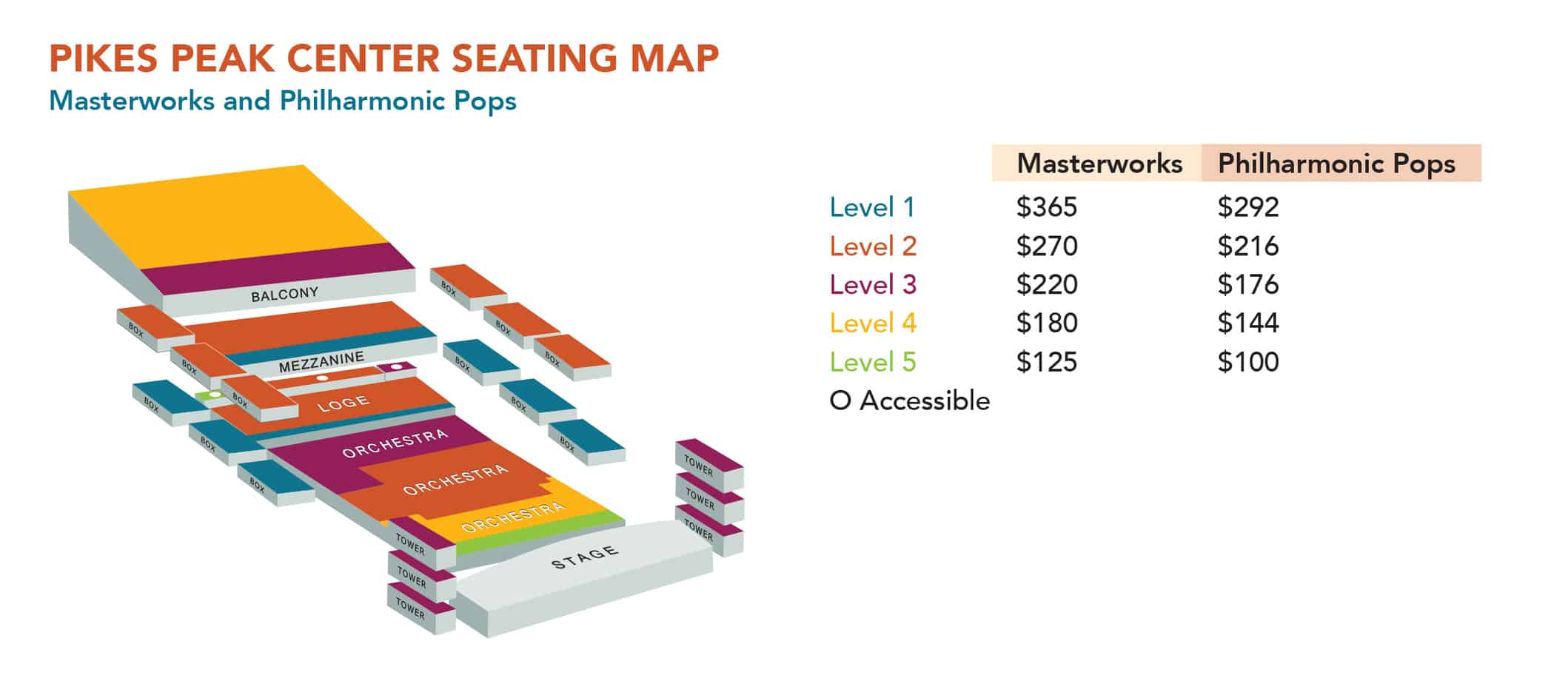

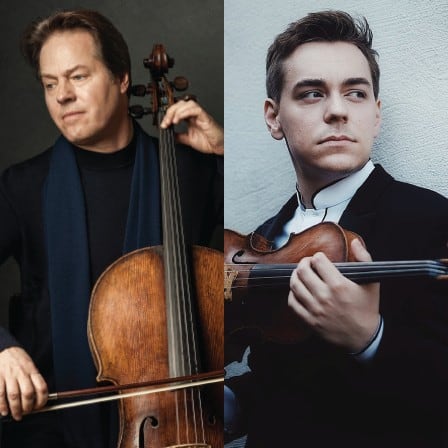
Don Quixote
190 S. Cascade Ave
Colorado Springs,
CO
80903
United States
+ Google Map
Program
Gerhard Dances from Don Quixote
Wang Jie Symphony No. 1
Strauss Don Quixote
About The Performance
Local favorite cellist Jan Vogler rejoins Josep Caballé-Domenech and the Philharmonic to “play” the knight himself, Don Quixote de la Mancha, with a theme as noble and graceful as Cervantes dreamed him to be. His loyal servant Sancho Panza is played by violist Matthew Lipman.
Join us for Pre-Concert talks, beginning one hour before performance time.
Read More
ROBERT GERHARD
Dances from Don Quixote
Composer: born September 25, 1896, Valls, Spain; died January 5, 1970, Cambridge, England
Work composed: The first version of Don Quixote (the complete ballet) was composed in 1940-41; Gerhard revised it in 1947-49. The four Dances from Don Quixote were arranged for orchestra in 1958. World premiere: The complete ballet premiered at the Royal Opera House at Covent Garden in London on February 2, 1950
Instrumentation: 2 flutes (1 doubling piccolo), 2 oboes, 2 clarinets (1 doubling bass clarinet), 2 bassoons, 2 horns, 2 trumpets, 2 trombones, timpani, bass drum, castanets, 3 Chinese tom-toms, cymbals, snare drum, tam-tam, triangle, piano, and strings
The name and music of Roberto Gerhard may not be familiar to some music lovers, particularly in North America. Gerhard, born in Spain to French-Swiss parents, ran afoul of Francisco Franco’s fascists during the Spanish Civil War. A Spanish Republican, Gerhard fled Spain in the late 1930s; his music was banned in his home country until after Franco’s death in 1975. After settling in Cambridge, England, Gerhard continued to teach and compose until his death in 1970. In the past two decades, increased interest in Gerhard’s music has sparked a rediscovery of this significant and neglected 20th century Spanish composer.
Despite the adverse circumstances of his life, Gerhard was prolific, best known for his large orchestral works, several operas, and ballets. Stylistically, his music evolved over time and reflects several diverse influences: early study with Arnold Schoenberg and Enrique Granados; ethnomusicological work with Felip Pedrell; Spanish folk music, particularly songs from Gerhard’s native Catalonia; and, beginning in the 1950s, explorations into the then-new realm of electronic music. Gerhard spent a decade trying to get his ballet of Don Quixote staged, no small undertaking during the chaos of World War II and its aftermath.
He began composing it in 1940, made several arrangements and excerpts of the music through the 1940s, and composed a second version in 1947-49. “Don Quixote is a ballet d’action … the musical elements are a) the purely Spanish, realistic, sanchoesque one, [and] b) the delirious, surrealistic, quixotic element,” wrote Gerhard about his music. The scenes alternate between the quotidian aspects of the story and the fantastic, dreamlike meanderings of the Don’s thoughts. Heroic brasses announce the Don’s growing obsession with knightly virtues in the Introduction to Scene I, while the piano’s modo perpetuo theme carries the music (along with the Don and Sancho) towards their adventures. “The Dance of the Muleteers” also features the piano with an allegro giocoso (cheerfully playful) galumphing melody.
Gerhard’s deft orchestration and brief spotlights on solo instruments round out the delightful scene punctuated with Spanish rhythms. “The Golden Age” finds the Don in a pensive mood; wistful string melodies with wind and brass solos capture his memories of colorful and exciting escapades. Dodecaphonic (12-tone) music evokes the spooky dark of the “Cave of Montisinos,” which then morphs into a quotation of a popular seduction song from the Spanish Renaissance, “What Do You Want From Me, Gentlemen?” Gerhard concludes with ethereal strings and a wash of colors, as the Don’s fantasies dissolve into emptiness
WANG JIE
Symphony No. 1 “Awakening”
Composer: b. 1980, Shanghai, China
Work composed: 2008, rev. several times through 2018
World premiere: Kuok-man Lo led the Curtis Symphony Orchestra at Field Concert Hall in Philadelphia, PA, on April 14, 2008
Instrumentation: piccolo, 2 flutes, 2 oboes, English horn, 2 clarinets, bass clarinet, 2 bassoons, contrabassoon, 4 horns, 3 trumpets, 2 trombones, bass trombone, tuba, timpani, bass drum, chimes, crotales, crash cymbals, glockenspiel, kick drum, snare drum, 2 suspended cymbals, 4 tom-toms, triangle, 5 wood blocks, xylophone, piano, celesta, harp, and strings
Composer Wang Jie has spent the last two decades nudging classical music and its concert audiences into spectacular frontiers. One day she spins a few notes into a large symphony, the next she conjures a malevolent singing rat onto the opera stage. For the past three years running, Jie’s Symphony No. 1 has been the most-broadcast work on the most-listened-to classical music show in the country. In August 2022, Jie’s latest symphony, Flying On The Scaly Backs of Our Mountains, premiered at the opening concert of the Colorado Music Festival in Boulder. Jie wrote the following comments to preface the fifth edition of Symphony No. 1, which was published in 2018: “I rarely start a piece not knowing how it ends. My Symphony No.1 was no exception. One of the biggest challenges for me has always been how a work begins. That applies to this symphony, as well as my life as a symphonic composer. So No.1 was special. It had to justify being my first. As if the pressure of measuring up to the great symphonists of the past wasn’t enough (it took Brahms 11 years to compose his first!), I added one more challenge: can I take two notes, a tiny two-note-motif, and spin out a 15-minute symphony? It’s been ten years since I did this reckless deed.
Although I’m painfully aware of its flaws, today I stand proud of this work. “Compared to the great romantic symphonies, this symphony is petite. The three movements are played without pause. I would have loved to tell you that the short duration was inevitable because the symphony is sustained by one microscopic motif. The truth is more mundane: that was the program slot given to me: 15 minutes or less … “On an anecdotal note, I composed my Symphony No.1 during the darkest time of my life: a long and wretched divorce had just begun. Some years later, it made an appearance at the Minnesota Orchestra, where I met my future husband, Fred Child, during a live radio broadcast. Hard to know what else this symphony has planned for me. It’s been a privilege to watch the lives it has touched and changed since I created it 10 years ago.”
RICHARD STRAUSS
Don Quixote, Op. 35
Fantastic Variations on a Theme
of Knightly Character
Composer: born June 11, 1864, Munich; died September 8, 1949, Garmisch-Partenkirchen, Germany
Work composed: 1897
World premiere: Don Quixote was first performed in Cologne on March 8, 1898, with Friedrich Grützmacher as the cello soloist and Franz Wüllner conducting.
Instrumentation: solo cello, solo viola, piccolo, 2 flutes, 2 oboes, English horn, 2 clarinets, bass clarinet, 3 bassoons, contrabassoon, 6 horns, 3 trumpets, 3 trombones, tuba, euphonium, timpani, bass drum, cymbals, orchestra bells, snare drum, tambourine, triangle, wind machine, harp and strings.
Miguel de Cervantes’ classic novel, Don Quixote, tells the adventures of a Spanish nobleman whose quest sounds a bit like a superhero’s mission: to right wrongs, pursue justice at all costs, and resurrect the knightly virtues of bravery, service to others, personal honor, and courtly manners. Richard Strauss’ sixth symphonic poem, based on Cervantes’ hero, is subtitled “Fantastic Variations on a Theme of Knightly Character.” The music opens with a brief introduction, in which we meet the story’s three main characters: the Don (solo cello), his faithful sidekick, Sancho Panza, (solo viola), and the Don’s lady, Dulcinea, the inspiration for his adventures (solo oboe).
The primary theme upon which Strauss constructed his “fantastic variations” portrays the Don, a well-meaning and off-kilter soul who veers between rage and gentleness. Strauss rearranged and condensed Cervantes’ plot to suit his musical purposes, but throughout the ten variations, Strauss maintains the basic arc of the Don’s adventures. In the first variation, the Don attacks distant windmills, mistaking them for menacing giants. In his haste he falls off his horse, but remounts to take on his next battle, which he thinks is with the army of the evil emperor Alifanfaron; the emperor’s army turns out to be a flock of sheep, and the brasses express their terrified bleats as the Don bears down on them. In the next variation, the Don and Sancho Panza discuss their adventures, with the solo cello and viola in animated dialogue. This is interrupted by a long orchestral interlude representing the beautiful Dulcinea.
Later, the Don continues on his warlike way and meets a group of religious penitents carrying an image of the Virgin Mary. Strauss represents the procession with a formal chorale in the brasses. The Don, thinking the group is abducting a beautiful maiden, is injured in his attack against them, but soon recovers. In the fifth variation, we hear the solo cello crying out an impassioned plea for Dulcinea, and the Don sends Sancho Panza to find her in the sixth variation. Since neither has seen Dulcinea, Panza tries to convince the Don that a girl they meet on the road is Dulcinea, transformed by a wicked sorcerer into an ordinary maid. Strauss amplifies Dulcinea’s primary theme with a jaunty tambourine to represent the maid. In the next adventure, a group of peasants tricks the Don and Sancho into riding a magic wooden hobbyhorse into the air; Strauss uses a wind machine in this variation to capture the sound of their whirlwind ride. In Variation Eight, the Don and Sancho ride downstream in a boat with no oars and narrowly avoid drowning. The pizzicato strings represent the water being shaken out of their clothes as they stand on the bank, and a choir of woodwinds voices their relief at landing.
The ninth variation begins with the Don exclaiming at the sight of what he takes to be two evil magicians (bassoons); they are in fact two monks. In the final variation, the Don duels with the selfstyled Knight of the White Moon, who defeats the Don and thus forces him to give up his knightly adventures. The Don and Panza return home, accompanied by a slow drum. For a brief moment the Don contemplates becoming a shepherd, but discards the idea. Upon his return home, he takes to his bed, exhausted, and dies. Although Don Quixote garnered unenthusiastic reviews at its premiere – one critic stated flatly, “[It is] a complete negation of everything that I understand music to be” – audiences made Don Quixote an instant favorite. Both solo and orchestral parts require the highest level of technical and musical facility, which makes Don Quixote a challenge for any orchestra.
Read LessConcert Sponsors
John Street and Mary Beazley
John and Margot Lane Fund of the Colorado Springs Philharmonic Foundation
Concert Co-Sponsors
David Doughty and Shirlee Kelley Doughty
Doris Tavernier-McLeod
Kathleen Fox Collins Fund of the Colorado Springs Philharmonic Foundation
Guest Artist Sponsors




